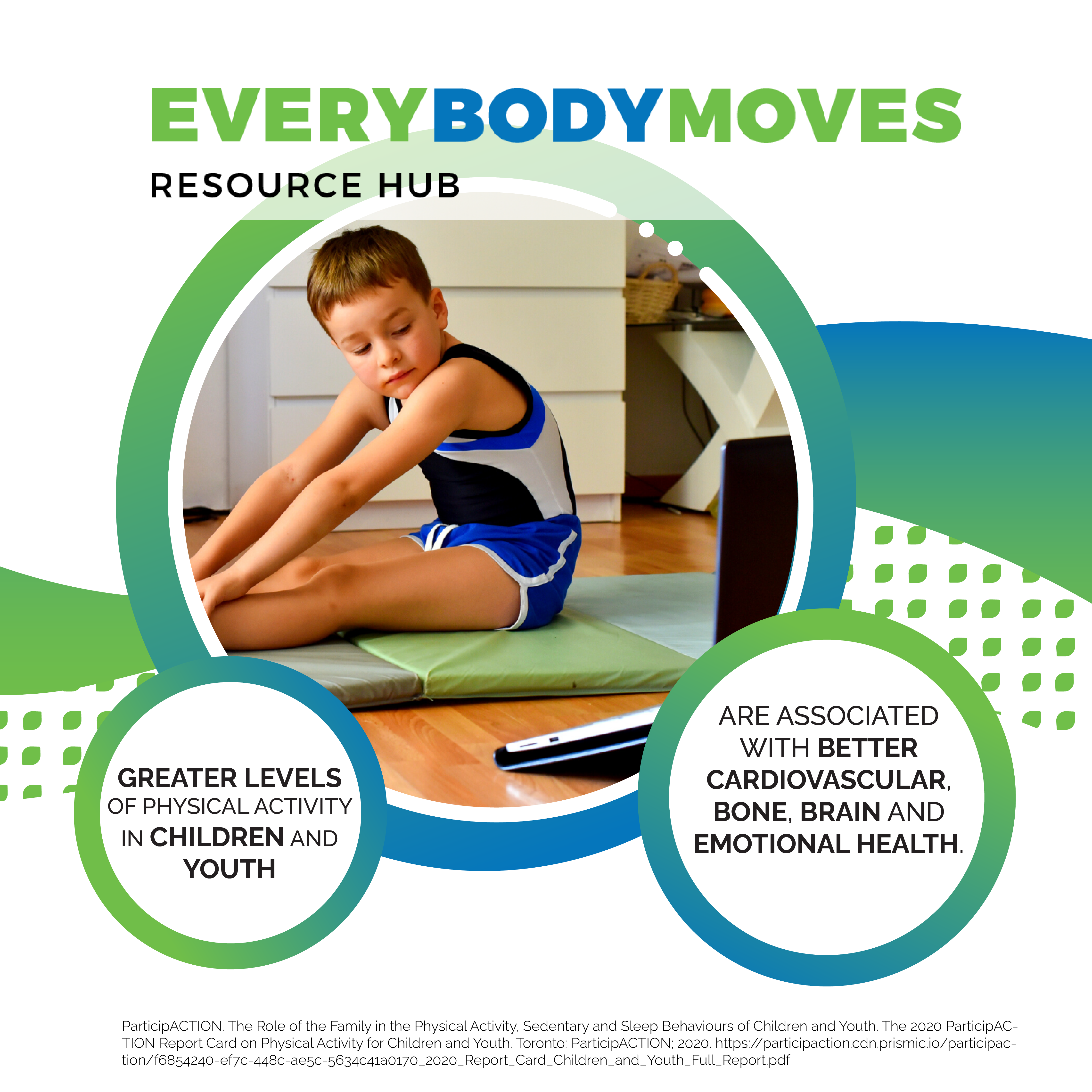
Grace Abioye runs a before and after-school care program and looks after a rambunctious group of elementary school-aged kids. She’s been the program leader for just over a year and wants to change up the activities to keep the children engaged. Recently a few new kids have joined the program that have disabilities.
Grace wants to ensure the new kids feel included, that they can all play together and is looking for ways to adapt activities. Grace is now looking for new activities to keep the kids healthy, active and engaged, but wants to ensure the resources she uses are according to Canadian guidelines and best practices.
Children and youth who engage in higher levels of physical activity have stronger cardiovascular, bone and brain health. That improved cognitive functioning from regular activity leads to better academic achievement. Unfortunately the reverse is true, children and youth who are insufficiently active are more likely to have symptoms of depression and anxiety, and increased odds of suicide ideation and planning.
According to the The Canadian 24-Hour Movement Guidelines, infants who are not yet mobile need at least 30 minutes of tummy time, while toddlers and preschoolers need at least 180 minutes of physical activity spread throughout the day of varying intensity.
Moreover, children and youth need at least 60 minutes of moderate to vigorous physical activity within a 24-hour period, and several hours of structured and unstructured light physical activity.
Physical activity leaders and community members can play a big role in getting young people active! School and recreation leaders can create inclusive and accessible programs and spaces that are welcoming and ensure everyone gets to play.
Family support has also proven to positively contribute to children’s physical activity levels. When parents or guardians add 20 minutes of moderate to vigorous physical activity to their day, children will add an average of 5 minutes to their own physical activity routine.
Despite all of the benefits of physical activity, less than one in five children and youth in Canada are meeting national guidelines for physical activity. By role-modelling, creating more accessible and inclusive programming and encouraging young people to be physically active, the community can make real life-long changes.
Grace started using Let’s Play to discover new activities and ways to adapt them for all abilities. With the resource, she’s learned more about the importance of physical activity among young people, and gathered new ideas for games. Grace is also pleased that the kids can continue playing together and learn how to adapt activities together.

Resources
EverybodyMoves has resources to get young people physically active. Look through the resources below, and check out the hub for even more! If you see a resource missing, submit it here. We want the Hub to house as many resources on inclusive and accessible physical activity as possible!
Let’s Play Toolkit
The Let’s Play Toolkit is a resource for educators, recreation leaders and coaches designed to support the development of physical literacy so that children with physical disabilities can confidently participate in play, sport and physical education with their peers.
Equity and Inclusion Lens Snapshot –Youth
This Snapshot created by the City for All Women Initiative was used to inform the work developed and implemented in their Equity and Inclusion Lens Handbook. This Snapshot highlights the multiple barriers and inequities that youth face, while also elaborating on the need for safe spaces, access to services and support systems.
Jooay App
Jooay is a free app that helps children with disabilities and their families locate leisure opportunities that are close to where they are, accessible, suit their needs and abilities, match their preferences and can help them develop and participate in society. Jooay also connects rehabilitation professionals, educators, and community members to learn from each other, exchange ideas and collaborate.
